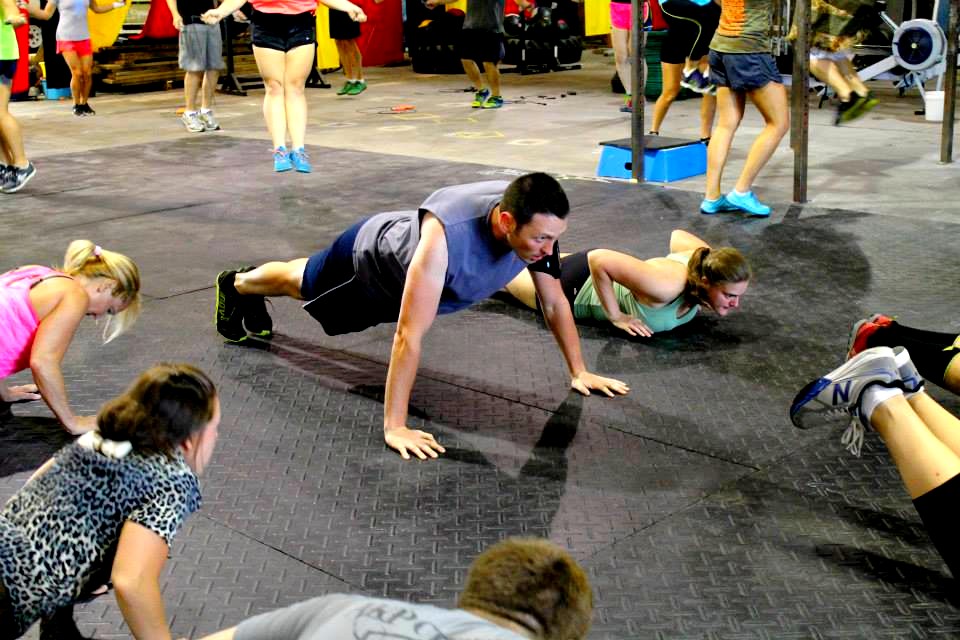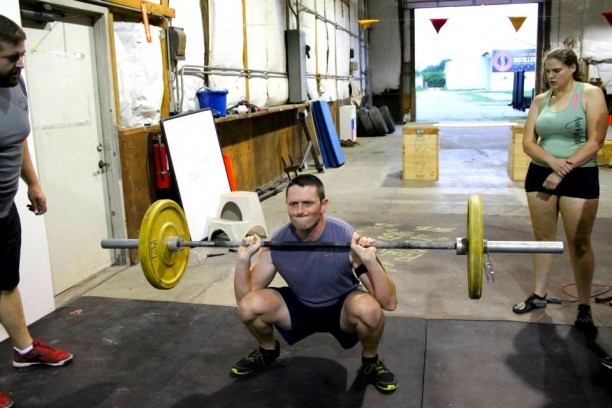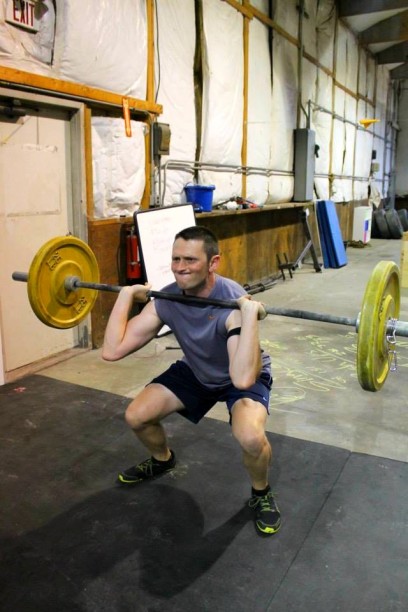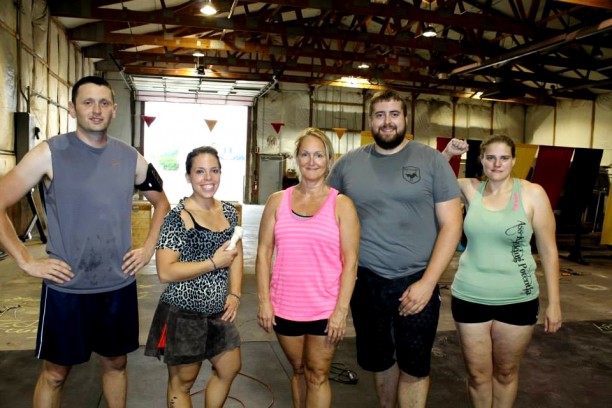Well, we’ve nearly reached the halfway point of the year, and so the halfway point of this project. So I thought it was time to let you all in on some rules I use to guide myself through all of this.
 |
My biceps are laughably small. Except
when compared to my biceps two
years ago. |
1. Never strive to be better than average. Always strive to be better than yourself. This gives you a goal that is both attainable on a daily basis, and perpetually in front of you. Each time you reach it you can celebrate having done so, but a new milestone will be placed before you. Let’s face it, until you’re competing at the world championship level, your performance will likely always be outshined by someone. Often in humiliating fashion. By a teenager. By comparing your performance to your own past performance, you are rejecting the unattainable, arbitrary standards of others, and instead setting in motion the kind of sustainable growth and improvement which may, some day, lead to you becoming a champion, even if it’s “only” of your local 5k.
And this advice doesn’t just apply to us rank amateurs. If you talk to reigning champions in any sport, especially those who repeat year after year, they’re always looking for ways to improve their own performance. Set faster laps, win more races, throw more touchdowns, whatever it may be. To stay at the top, they have to compete with themselves, even if they’re head and shoulders above all the competition.
 |
“What would you like on your fries?”
“Yes.” |
2. All things in moderation, nothing to excess. Including moderation. Variety isn’t just the spice of life. It is life. Even the biological definition of life requires that it changes, improves, varies. Our bodies were made to eat lots of different things, and do lots of different things. Locking yourself down to machine-like inputs and outputs will only lead to stagnation at best, and deficiency at worst.
So change it up. Eat outside your diet once a week or so. Try foods and drinks that challenge and intrigue your palette, or maybe even scare you a little. Push yourself to run further, or faster, or ride down a trail you’ve never attempted. Learn a new movement in the weight room, and perfect it until it’s one of your new favorites. Cross train, always. Find a well-written book or article or series or documentary on a topic you have no clue about and devour it. Push your mind and your body to places they’ve never been, and you’ll find that you grow in ways you could’ve never dreamed.
 |
| I raced with this thing on my ankle for the last three races of last season. That was dumb. Especially the 10 mile trail race. |
3. Pay attention to your body, but first learn the language it speaks. If there is a food that makes you feel good physically, not just mentally, eat that. If it makes you feel bad, don’t eat it. But don’t stop eating a food (or a whole food group) because you heard/read somewhere it’s bad for you, and then find yourself believing in an effect that doesn’t exist. Always, always, when trying a new dietary technique or exercise, beware of your own confirmation bias.
If you stop eating a food and nothing changes, or the desired effect is not achieved, but then you start eating that food and you feel bad, it’s because your digestive system isn’t used to it, not because the food was bad from the beginning. There are various levels of enzymes and flora in your gut that process certain things. If those things aren’t present, those levels drop. When those things are reintroduced, it takes time for your body to bring the levels back up, and you’ll feel bad in the interim. This is not indicative of anything positive or negative, but only that you have removed and reintroduced a substance in your diet.
And by the way, if the food group you’re omitting has been part of the human diet for thousands of years, chances are it’s just fine. We’ve done pretty well for ourselves eating red meat, drinking milk, chewing fat and making various grains into all sorts of things. Unless you have a medically diagnosed sensitivity, you’re just guessing, and probably wrong.
Also, when you’re hungry, eat. You don’t have to eat a lot, and you should understand the effects of what you’re eating, but often the worst solution is to have nothing. Get ahead of your stomach by planning meals and snacks as far in advance as you can manage. Don’t forget to scale your intake in anticipation of planned exercise. While I don’t believe that there’s any such thing as “starvation mode” as such, there are compromises your body has to make when it is severely deficient, and none of them are particularly helpful to your goals of getting smaller/stronger/lighter/faster/bigger/more awesome.
This rule doesn’t only apply to food, however. Working out until you drop to the floor every day when you’re trying to get strong isn’t likely to help you with your goals. Going out and running five miles when your previous long was from the door of the mall to your car in the rain won’t make you a better distance runner. Don’t train yourself into an injury, push yourself too early, or put yourself in the hospital.
Speaking of the hospital, learn to recognize the signs of impending injury. There’s a big difference between discomfort and pain, and you have to find that line. It takes practice and experience. If you’re doing a movement in the gym that just feels wrong, whether it’s new to you or something you’ve done 1000 times, stop. Evaluate what you’re doing, and what your body is telling you about it. For years, I couldn’t do back squats because my shoulders just wouldn’t rotate back far enough to grasp the bar without pain. So, I stopped doing back squats and did other leg things, until I could rehab my shoulders enough to do the required movement. Continuing to try and wrench my shoulders into place for one exercise was never going to be productive, either for my shoulders or my squats.
So listen to what your body is saying, and then…
 |
| And it doesn’t hurt to have a cute girl to go along with you, either! |
4. Be patient, and give changes time to work. Never make a change to an input or an output for a week, and then abandon it thinking it doesn’t work. The human machine is astoundingly adaptable and moldable, but all these changes take time. There is a lag, sometimes days and days long, between an action taken and the result of that action, and even then it might be too small to notice at first. So unless what you’re doing is causing you injury, just keep at it for awhile and really evaluate how it’s working for you.
Dramatic physical changes are often accompanied by rapid mental changes, but you can’t let your mind be the scale of progress for your body. Deciding to make a change is the first and hardest step, to be sure, but it isn’t the only step. If your goal is to lose weight, track your trends over months, not days. Compare years, not weeks. Remember that the goal is to have a healthy life, not a healthy 60 days, so always take the long view.
 |
| There are no secrets. Anyone who says differently is selling something. |
5. Never take an “expert’s” word as gospel. They may be an actual expert. They may be a colossal scumbag posing as one. They may just be some ripped dude at the gym who thinks what worked for him last week is going to work for everybody. The point is, the only expert on your body, on your technique, on your abilities, is you. This applies most overwhelmingly to supplements. The science behind so many supplements is shaky at best, and largely anecdotal. If you want to try something, by all means try it. But pay attention to the last two rules, give it an objective evaluation, and if it doesn’t seem to be doing anything, can it.
Remember this in training as well. Everybody has a plethora of different things that are right and wrong with their bodies, and minds. Some people are very strong in the upper body, but have to work like crazy to build their legs. Some people can knock out 1000 situps a day but struggle with pushups. Some people just can’t master certain movements. And all of that is okay, as long as you work around it sufficiently to meet your own personal goals. Don’t ever adhere so rigidly to a workout plan that it’s hurting you or holding you back, just because some “expert” wrote it. They don’t know you, and chances are they didn’t have your picture on their desk when they were writing the program.
 |
| More accurately, Fun, More Fun, Whee, and YEE HAW! |
6. Find your happy place. No matter what you’re trying to do, or where you’re trying to go, you’ll almost never get there if you aren’t enjoying it or aren’t interested in it. Starting a fad diet and a 90 day workout program pretty much guarantees that you’ll end up right back where you started. To make sustainable, maintainable progress, you have to change your lifestyle.
Don’t try a diet, change your eating habits. Permanently. Make small changes, one or two at a time, that you can embrace and maintain for the rest of your life. If you know that drinking soda is absolutely terrible for you, why are you doing it? What are you gaining from it? You know what it tastes like already. You’re telling me your life would somehow be less worth living without it? Soda wasn’t that big of a loss for me, but Oatmeal Creme Pies… That hurt. So did quitting smoking. But you know what? Worth it, and now that I’m free of those things, I don’t spend all day wishing I could have them. They just don’t matter that much.
Don’t buy a series of home workout videos, buy a bicycle. Or a jumprope. Or a kickass pair of running shoes. Or some climbing gear, or a kayak, or hiking boots. Find something you love to do that gets you active, something that makes you feel like a kid, something that you’d rather be doing right now than reading this post, something that you obsess over when you’re daydreaming at work.
You might not know what that thing is yet, but that can be fun, too! Try some things, find some local groups to get involved with, and find the thing that’s going to work for you. There’s something out there for everybody, but you can’t wait for it to come to you.
 |
You know you’re hooked when you’re reading
about disciplines you aren’t even interested in. |
7. Become a huge geek. Once you’ve found that magical thing that drives you, go all-out nerd on it. Subscribe to the magazine, join the forums, read the blogs, and just dive into the culture. Immerse yourself in your new thing, study it, learn the lingo, and go on and on about it at work and social events. Your passion will not only feed itself, but it may just infect a few others, too. And that’s a good thing.
 |
| Good friends, good beer, and a good meal. I imagine heaven is a lot like this. |
8. Surround yourself with passionate people. There’s nothing that will reinforce a habit pattern and provide a positive feedback loop quite like being consistently in the company of people who share your obsession. No matter what you do, there will be a group of people who are just as nutzo about it as you, and they’d love to hear your story. Whether they’re local or online, interacting with them will be among the happiest times in your life. You’ll be refreshed and inspired by them, and they will be by you, and together you’ll all have orders of magnitude more fun than you would on your own.
 |
| The pre-race rituals. |
9. Plan. Set Goals. Compete. Having tangible things to work towards, like races and competitions, provides you with lights at the end of all the tunnels. I’ve met a lot of very fit people at the gym, on the track and at the trailheads over the years, and only a very small percentage of them exercise just for the sake of exercise. A gym routine swiftly becomes just that, and you almost can’t help but fall into a rut, which will make you stop training.
Having a race gives you something to work towards, a direction for all of your training. If you find yourself flagging before your 5k is done, maybe you need to work on your endurance. If it takes you longer than you want to finish a lap at your local mountain bike race, maybe you need more leg strength. If you can only jog from here to the mailbox right now, but you got talked into a half marathon, you’ve got very specific work to do. Even if you’re just trying to get to work faster on your bicycle, that just became your race. Use that goal as your compass, and let it pull you to where you want to go. There is nothing that will focus you more clearly than having a specific event to be ready for.
 |
| My niece, the best athlete in the family. |
10. Have fun. Don’t forget that the point of all this is to end up a happier, healthier you. Don’t let your new lifestyle come to dominate you in a negative way, coming between you and family or friends. Know when to step back a little and be content with the progress you have made, or throttle back on a plan or program or activity that just isn’t doing it for you anymore.
If rule #6 isn’t happening any more, maybe you need to look for something else. Or maybe just add some variety. Or maybe apply what you’re doing in a different way. But always make sure that what you’re doing is the thing that will bring you back.
Live. Love what you’re living. Leave it all on the floor, or field, or course, or trail. Have a blast. Then have a beer, on me.

























